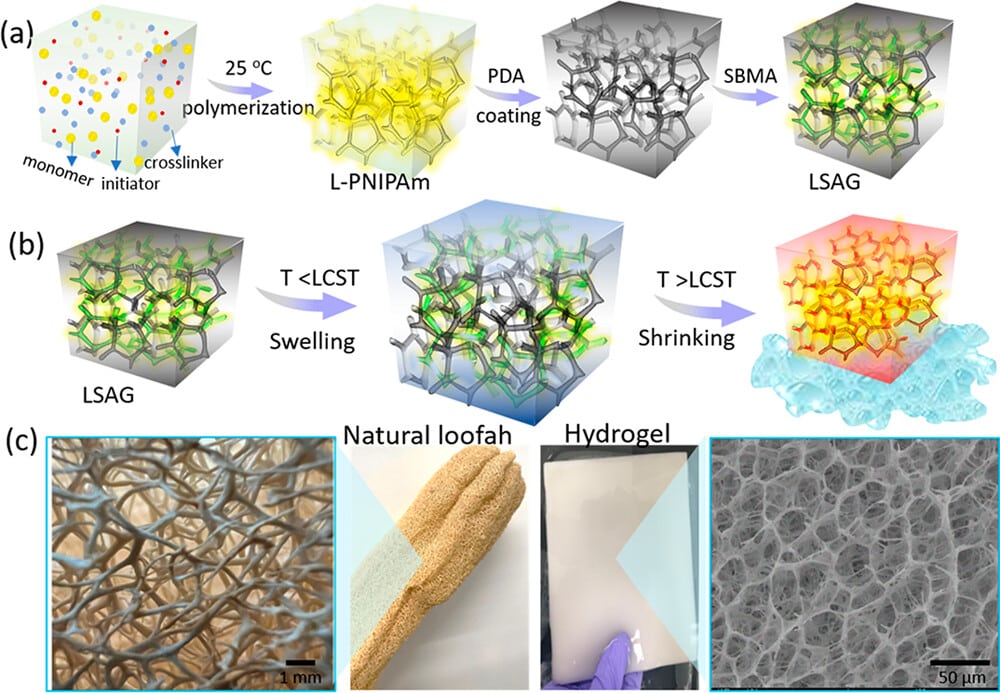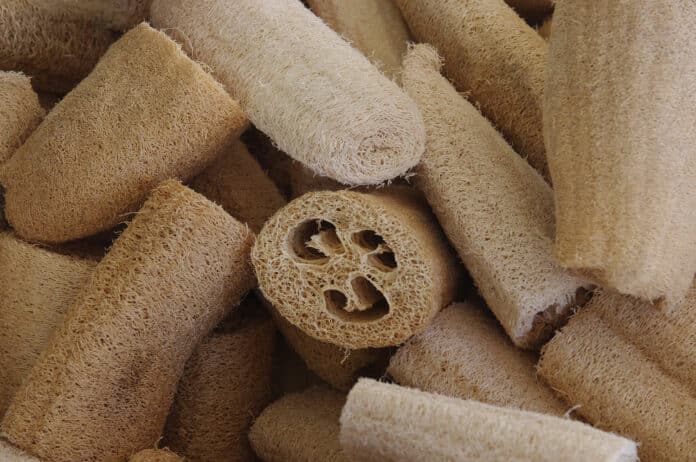Providing access to safe, clean water is a pressing global challenge due to the expansion of industrialization, growth of the worldwide population, and contamination of freshwater resources. There are many devices currently in development that use sunlight to purify tainted water, but their output is often quite limited.
Now, researchers at Princeton University have designed a new sunlight-powered porous hydrogel inspired by loofah sponges that could potentially purify enough water to satisfy a person’s daily needs – even when it’s cloudy.
Many existing solar-powered systems use sunlight-driven evaporation to purify water, but this approach doesn’t work well when it’s cloudy.
Temperature-responsive hydrogels, mainly composed of poly(N-isopropyl acrylamide) or PNIPAm, offer an alternative that absorbs dirty water at cooler temperatures and then expels it in purified form when heated.
According to Rodney Priestley, Xiaohui Xu, and colleagues at Princeton University, the conventional PNIPAm gels, however, can’t generate clean water fast enough to meet people’s daily needs because of their closed-off pores.
To solve these issues, researchers set out to replicate the large, open and interconnected pores design of the natural loofah sponge in a PNIPAm-based hydrogel. They used a water and ethylene glycol mixture as a uniquely different polymerization medium to make a PNIPAm hydrogel with an open pore structure, similar to a natural loofah. The researchers then coated the opaque hydrogel’s inner pores with two other polymers – polydopamine (PDA) and poly(sulfobetaine methacrylate) (PSMBA).

Xu and her team tested the resulting material using an artificial light equivalent to the power of the sun. The material absorbed tainted water at room temperature and then released 70% of its stored water in 10 minutes when heated by artificial light – this rate was four times greater than the one for a previously reported absorber gel.
Additionally, under lower light conditions that replicated partly cloudy skies, the loofah-inspired gel still released a similar amount of stored water within 15 to 20 minutes.
In the lab tests, the new loofah-like material was successfully used to remove pollutants such as organic dyes, heavy metals, oil, and microplastics. In two cycles of treatment, water samples with around 40 parts per million (ppm) chromium were absorbed, then released with less than 0.07 ppm chromium, which is the allowable limit for drinking water.
Xu says the unique hydrogel structure could be useful in additional applications, such as drug delivery, smart sensors, and chemical separations.
Journal reference:
- Xiaohui Xu, Néhémie Guillomaitre, Kofi S. S. Christie, R. Ko̅nane Bay, Navid Bizmark, Sujit S. Datta, Zhiyong Jason Ren, and Rodney D. Priestley. Quick-Release Antifouling Hydrogels for Solar-Driven Water Purification. ACS Central Science 2023, DOI: 10.1021/acscentsci.2c01245
